When we open our garden for charity on the National Garden Scheme one thing people always comment on is our micro pond with its miniature pink waterlily. Ponds sound complicated but actually they’re really easy and none are easier than a micro pond! Here (and in my book A Greener Life) I’ll explain how to set one up and why it needs practically no maintenance.
How to make a micro pond in a pot
To create a micro pond you just need something to hold water that has a minimum size of 60cm diameter and 40cm depth, enough to hold a minimum of 30cm of water. 30cm gives most plant life enough space to grow – if you choose the right plants.
What container to use for a micro pond
Any container will do, you just need to make sure it is totally water tight and won’t leak water gradually. For instance, a terracotta pot that isn’t glazed is porous and so water gradually will seep out. Obviously any holes are a problem. The best containers are made of metal, glazed terracotta, polystone, fibreglass, non-porous stone like granite or marble and plastic. You can have these pots on a hard surface raised or even sink them below ground like a normal pond in miniature – where Butyl pond liner will be fine and cheap too.
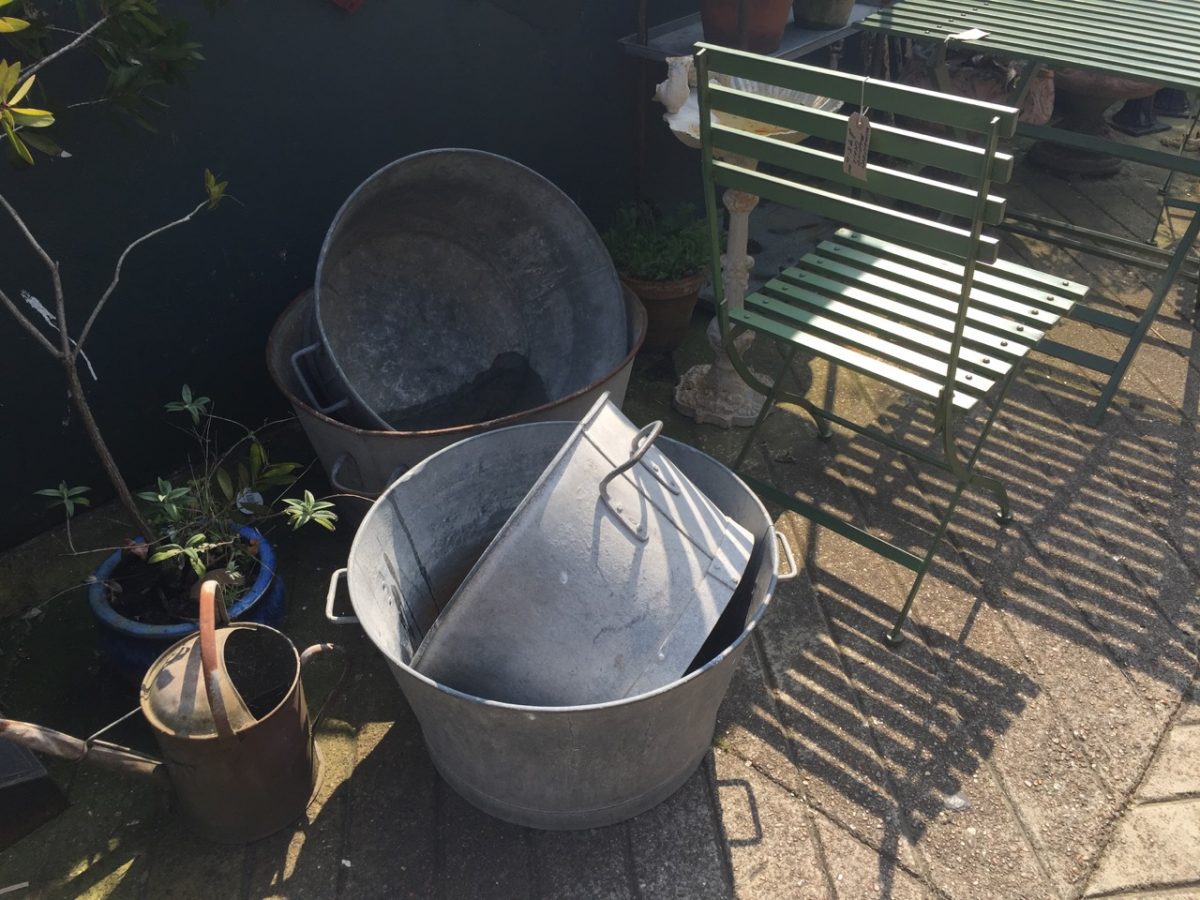
I spent a long time choosing the right material for our garden back in 2015 and I kept coming back to antique metal washtubs. They’re not cheap, I found them for up to £125 for the smallest and more for larger. They tend to be zinc coated and therefore water tight. When I found one for £25 in East Sussex I thought it was too good to be true – it was, there were leaks.
How to plug holes in micro pot ponds
I considered using Butyl liner in the whole tub but in the end used waterproof putty usually used by plumbers on pipes. It’s incredibly hard wearing and long lasting. I plugged our holes in 2015 and haven’t had to repair it yet.
Does micro pond water have to be rain water?
No, this is one of those big gardening myths born out of the fact it’s ideal to use rain water as it’s pure, but ultimately it doesn’t really matter. If you use tap water, it can be quite hard (i.e. contains lime) in some areas and will all have some chemicals to clean it for drinking. To deal with this, you just fill up the pond a day or two beforehand and leave for the chemicals to evaporate, making it cleaner for plants.
When I planted ours, it was in a rush for Big Dreams, Small Spaces so I didn’t have the luxury of waiting. I filled it with tap water, bunged the plants in and they were perfectly happy with no ill effect whatsoever.
Do you have to have a filter or pump in a micro pond?
No, this is another myth that’s exaggerated from a small fact. Wildlife ponds in general look after themselves. Pumps are for oxygenating and cycling water so it doesn’t sit still. If you have the right number of oxygenating plants it won’t need it. Equally, cycling water prevents midges and mosquitoes breeding in still water. I find by putting our pond in full sun in the open (the ideal location for a pond anyway) this has never been a problem as the sun and wind deal with them. A filter is if you want cleaner water – usually used when you have fish too – so you can add one but actually I find clean water detracts from a natural looking pond. Slightly mirkier water hides the baskets while still being transparent enough to be pleasant.
I’m not a fish expert so won’t go into them here – personally I wouldn’t recommend them in pot based micro ponds because they can get quite hot in mid summer sun. I’d imagine that would be unpleasant if not deadly for fish. Plus fish do make ponds mucky, which is a real hassle.
Plants for pot micro ponds
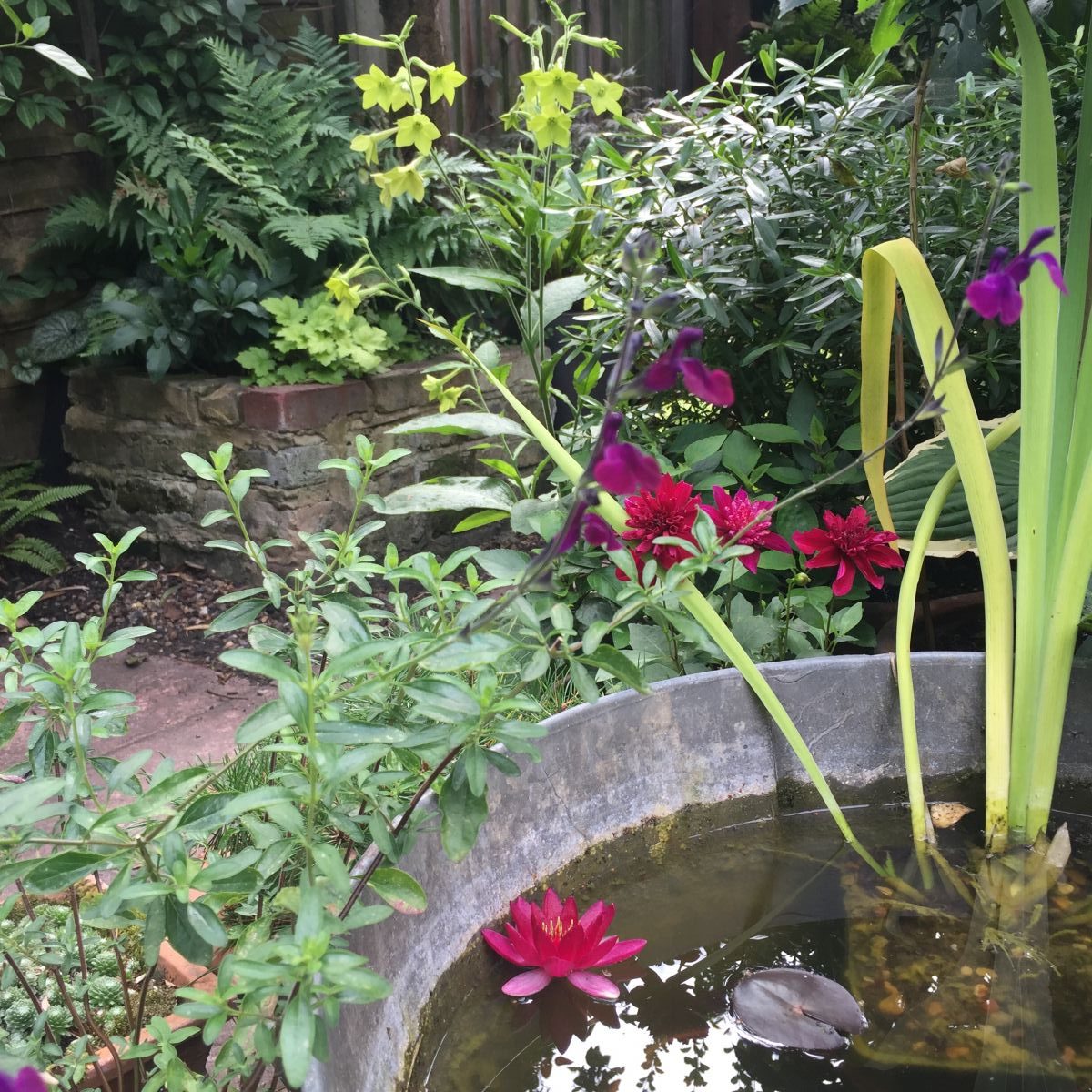
There are a whole host of plants available, you just need to be sure they are suitable for small spaces of water and therefore usually dwarf. Don’t overcrowd it, which is the temptation, instead leave enough space to enjoy the plants and the water itself. After all, the water is the key element. If you over stuff it with plants, while they’re different and interesting, you may as well grow normal pot plants. Seeing water is peaceful even on a small scale.
Firstly you need an oxygenating plant like Ceratophllyum demersum, which you just chuck in and it floats around. I find this plant can die off in winter so needs replacing, check on yours in spring.
Waterlilies are probably the most popular to have because they’re so different to other garden plants, ours is Nymphaea ‘Laydekeri Fulgens’ but there are quite a few in different colours, like Nymphaea candida which is white. Dwarf water lilies are placed at the bottom of the pond as they need the maximum depth to stretch their pads and flowers up from. Other than that, they are literally the easiest plants to grow.
Marginal plants, those that grow just below the surface of the water, usually at the edge of the pond. Their crowns sitting at or up to 5cm below the surface of the water. Marsh Marigold, Caltha palustris is the classic example, alongside Irises. Iris ‘Kermesina’ and ‘Gamecock’ are good.
There’s a huge range of exciting and unusual plants to choose from, including cotton grass. Take a look at Waterside Nursery and Lilies Water Gardens for a good range.
Planting the micro pond plants
The only technical bit with ponds is that plants are grown in baskets not pots (buy online or from specialists) allowing roots and water to mix properly. You must use an aquatic compost, which can be hard to find in some garden centres but those with aquatic plants will have it. Or buy online.
For sizes of baskets to use, please do check for each plant. A dwarf waterlily and iris can be quite vigorous, mine grow in 20cm baskets. The Iris can quickly outgrow this and need dividing or potting on. Add gravel to the top of the compost to prevent lots of it floating up in the water.
Gradually lower the basket in to its position. Some compost will muddy the water but it will settle after a day or so. The marginals will need to rest on a brick or upturned pot to sit higher up. Make sure this object is sturdy enough to offer a solid platform. You can buy cages to prevent plants blowing about, but with wet compost and gravel I find this unnecessary personally. Our garden may be in Central London but it’s in a wind trap and very windy, no pond plant’s ever toppled.
Maintaining micro ponds
You shouldn’t have to clean a micro pond unless it gets chocca with leaves in Autumn. To prevent this, cover it with a net as leaves start to drop and then remove it when all leaves have fallen from trees. It doesn’t look fantastic but is for a short time only. Or, let them fall in and scoop out later. Whichever you mind least. I go for the latter these days as scooping out a tiny pond doesn’t take long.
Some algae may build up but not really and this is easily removed. Plants may need some specialist fertiliser capsules from aquatic plant nurseries, however I am finding this to be less necessary at the moment. I haven’t fed this year and my Iris seems stronger and the waterlily is flowering regularly as normal.
How wildlife friendly is a micro pond in a pot?
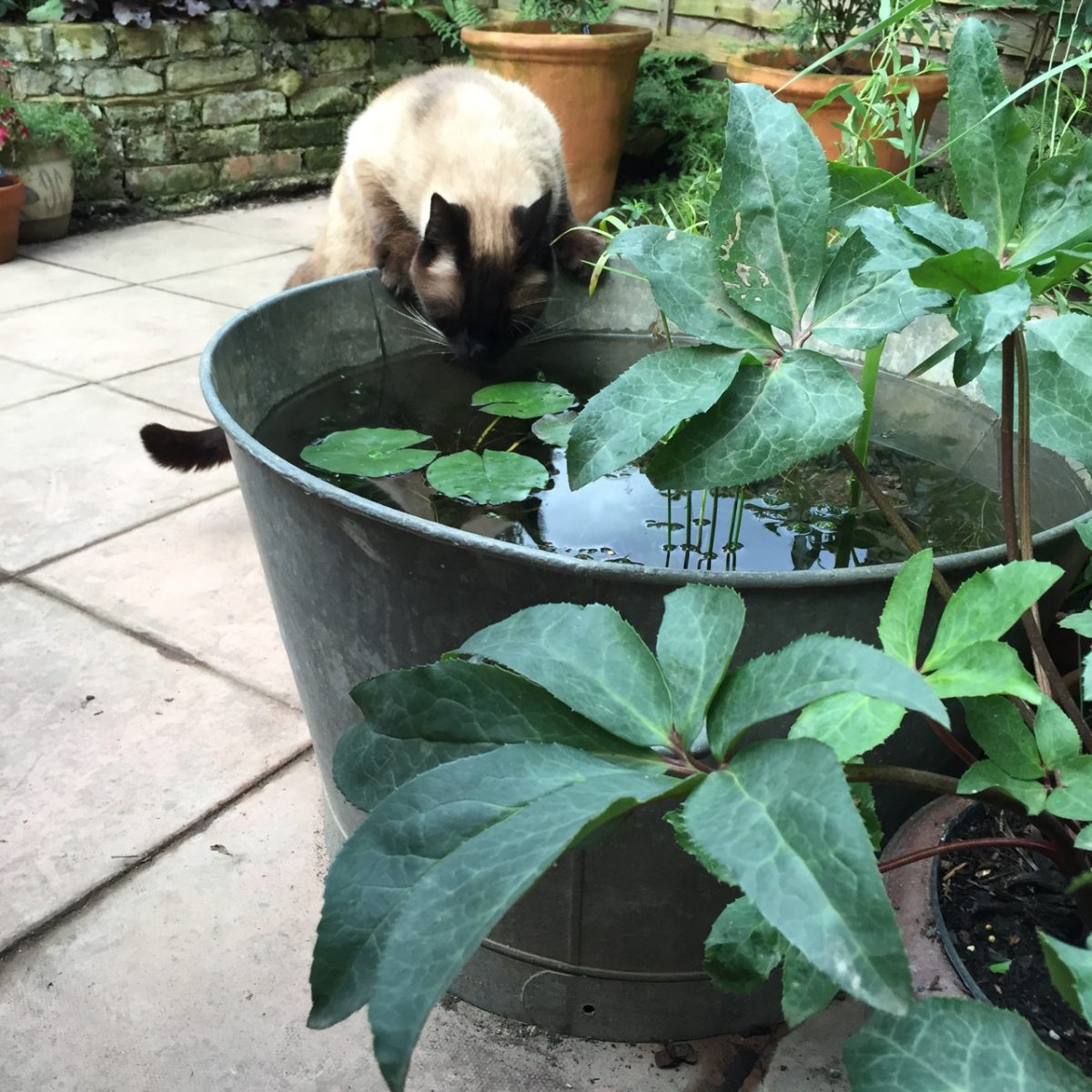
Our cat loves drinking from our little watering hole as do wood pigeons who comically waddle around balancing on the side. This year we have pond skaters – wherever they came from! We don’t have frogs (in the garden as we’re in them middle of the city) though I know with the right access they can easily get in and out of a micro pond and will use it. You’d need to build a little ramp or steps up on the outside and inside so they can get out too. We’ve also had the odd dragon fly.
How much wildlife you attract is really up to you in terms of the access you give them, just think about how they will access the water and get out if they fall or jump in. As I say, I’d avoid fish for mess, unless you want to attract Herons to eat them.
Micro ponds in pots are one of the easiest additions to a garden. Not only do they need no watering (bonus!) they add a sense of calm and gravity no matter how small.
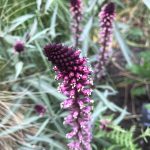
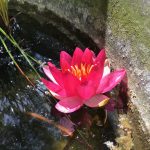

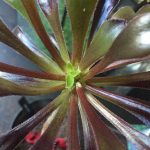
Gambusia sp. aff. Affinis is good for eating mosquitoes larvae, don’t require lots of care.
This is really useful. I want to put in a pond in my garden, but that won’t be for a couple of years, so this might be a good alternative in the meantime. Thanks for the inspiration.
Thanks, that’s a good read. I have a mini pond buried on our allotment – I made it this year to house some tadpoles that were in a puddle. It’s lovely to watch the activity and now we have some tiny froglets! I really want to get a lily for it now I’ve seen how good yours looks
Wow that is very generous of you to make a home for those tadpoles! I remember as a kid that there were lots of them in puddles and I always felt very sorry for them. I’m hoping to make a beneficial mini pond soon as well to nature 😁😊🍀🏞
Really good informative practical post Jack. I’m on the hunt for a suitable container!
“Rain water is pure” Is Acid Rain no longer a thing?
I’ve struggled to grow a miniature water lily in my container pond. Admittedly it’s only 25cm deep in the middle. I took the first one back because I thought it was diseased, but when the second one also failed to grow (the leaves rotted off), I decided it must be too shallow. Should I give up? Lilies are not cheap!
Hi Caroline, how sunny a spot is it? They need full sun. How have you got it potted? I think 25cm I a little too deep. A friend tried doing the same and struggled. I think they need at least 30-40cm. But it could be to do with other reasons.
Jack
Hi Jack. I would like to make a container pond but the only area I have is heavily shaded in the winter but does get sun for several hours a day in the summer, I would like a couple of fish. Would this work?
Hi Delwen, hmm I’m not so sure. They really need quite a lot of sun to do well in summer. Perhaps give it a try this summer anyway?
Jack
That was really helpful, my skip found zinc wash bucket was planted, they died so I took them out. Its now the birds’ drinking and bathing water but they would prefer it, wouldn’t they, if instead of testing how deep its become before hopping in, I created a wildlife pond do they have bricks to stand on? Your article has really given me the encouragement I needed. Thank you so much!
Val Pyott
Might be a daft question… When it rains does it not just fill up and overflow?
Hi Heather, it might do in very rainy regions but it never did for us. There seem to be more days through the year that are dry causing the water to lower. If it did reach that point you could take a little out with a bucket or watering can.
Great article and thanks. I’m going to measure the size of my container tomorrow as I know how many litres it holds, but not the dimensions! I do have a solar floating fountain thingy in it at the moment and would like to know what would be best to plant with that? Love the trickle sound of water in the garden.
Hi I’d love to do a micro pond,I only have a very large terracotta pot,it’s frost resistant,would that be ok to use? Many thanks
Probably not because frozen water will expand and crack it.
Oh dear😔Thankyou for the reply.I wonder if I lined it with pond liner and some kind of underlay/padding so there was a bit of expansion room🤔?
Yes that would be worth trying! Or perhaps empty it a bit in winter
Thanks for this! I’ve been wanting to create a small pond for ages so great tips here. I assume it will be too late to have tadpoles this year but I will endeavour to build one within this next month
I have got a 40cm deep and 60cm diameter container. Would 1 oygenator, 1 floating and 1 marginal be enough plants for it?
Yes 😊
Thanks for the ideas but you don’t mention where to position the pond, I only have space on the north facing side of the garden will that be okay? It won’t get much if any direct sunlight
Hi Su, a pond need some direct sunlight for plants to grow. I think north facing with no direct sun will be too shaded.
I live in New York City, and I’m trying to build a container fish pond using a big aluminum container. I’ve dug a hole and buried part of the container. Is this safe? Do I need to line it?
Jack! You inspired me with this article that as soon as I could I was making my own container pond – a great lockdown distraction.
However something’s not quite right with it. A few people who have normal garden ponds have said it looks very unhealthy and should be drained and plants blasted with a hose pipe. Their argument is based on the large presence of midge larvae and a number of rat-tailed maggots. However I’ve only seen them eat decaying plant matter. I’m more concerned about the large numbers of tiny (pinhead) sized green insects that cling to the sides of the container below the water line and attack all of the plants in the pond. There’s 2 or 3 frogs that come and go but seem to feed on the insect pests.
The plants I’ve got are: water lily Helvola, Juncus Effusus, variegated Myotosis, Creeping Jenny and then 2 oxygenating plants: hottonia palustris and hippus vulgaris. The container is 60cm diameter and 45cm depth. It gets approx 5 hours of direct sunlight per day.
Sorry for such a complex question but I really don’t want to drain the pond unless I really have to. Any advice at all would be massively appreciated.
Hi Gareth,
What you’re describing sounds to me like a very healthy wildlife pond! I personally wouldn’t do a thing because it sounds like you have a very good ecosystem going there with so much wildlife! Unless you feel something is definitely causing a problem? I’m not sure what the green insects could be without a photo. You can always post one on the community where I can reply again: community.jackwallington.com.
Mosquito larvae can be a bit of a problem for mosquitoes but if you haven’t noticed an influx of them biting you, I would say the other pond life is keeping them under control.
How exciting, I’m so glad the article inspired you to try it out and that it has worked so well! That’s the most wildlife I’ve heard of in a container pond!
Jack
I’ve just dig hole and put plastic washing up bowl lined it put brick in so frog hopefully get in out , looking for very small sola pump or plants
Hi Gareth
I’ve wanted a micro pond for ages, so I’ve dig hole put washing up bowl in, lined it, put couple of bricks for frog ect in/out was looking for a very small pump (sola) can’t find one, so thought about just under water plant for oxygen, any help would be great
Thanks carol
What a great and informative post! I’m in South London and up until recently had a patio micro pond in a washing up bowl which attracted mostly mosquitoes I think, then it filled up with what I think were daphnia. Might they have cleaned the water? It changed from murky green back to transparent without my doing anything. Moving house soon and looking forward to establishing a new micro pond, though it might be more challenging as new patio will have less direct sunlight. Also I’m reassured to see your cat drinking from it and no words of warning attached – both my and my neighbours cats were always trying to drink from mine but I shooed them off in case there was anything that might make them sick!
When is the best month to ale a container pond??
Hi
I want to make a micro pond in a half barrel but I’m concerned about mosquitoes as they love me so much! Is it inevitable that I have to put up with them or would a solar fountain maybe stop them?? Thanks marie
A fountain could stop them! It’s worth a try. If you hold out, you’ll get pond skaters and they eat the larvae keeping numbers right down.
Hello Jack,
I have been trying to source a suitable galvanised tub for a long time to recreate your micro pond. The largest I can find is 24cm deep. Is that really too shallow?
Many thanks
Craig
It is a bit shallow but still usable, it just means you can’t grow plants that want to be deeper like waterlilies, all the marginal and shallow water plants will be happy.
Jack
I tried making wildlife pond in metal planter, but water, rocks and plants all went rusty red. Refreshed the water,but same thing has happened. How can I overcome this, or do I need different container? Thanks.
A different container unfortunately, if it’s rusting it means it’s not protected from the effects of water. You could try painting it but once rust sets in, unfortunately it’s almost impossible to stop. Give it another try though, it shouldn’t happen 🙂
Jack
Does the container need to be dug in the ground I have a lovely large glazed terracotta bowl I’d like to use as a mini pond
Thankyou
No ours was just on a patio
Hi
I seem to be struggling with blanket weed in my micro pond, it gets sunshine and I feel not overcrowded with plants which includes oxygenated plants. Any tips to eradicate or reduce?
Oh yeah it’s awful. The best way is to reduce nitrogen levels, which may happen as the other plants grow and become more nutrient hungry. Or add another plant. Or move into slightly more shade – if it’s in full sun, it might be too much causing the blanket weed.
Hi Jack, I have an old Belfast sink that I’m wanting tto turn into a small container pond. Am I able to buy plants that I can put straight in no fussing with them? We have built a hedgehog house and a bug hotel so this poondd is next on our to do list 😁
Hello, many thanks for this. I was wondering how you deal with heavy rainfall? Does the pond just overflow or is there a little drain near the top of the rim?
Thanks
You could do either really, whatever is most practical for you. I just emptied it a little when I saw it reaching the top.
Every time I read something like this it makes me want a micro-pond, but every time I try I seem to end up with a stinky breeding ground for midges and end up pouring it away. I have followed advice from various people over the years, but always seem to end up with the same results. What can I do to prevent the midges taking over?
Hi Helen,
I actually cover this on a page in my new book out in March, but essentially there are a couple of things – largely it’s about holding out until you attract enough predator insects which will eat them.
Jack
Maybe I need to try to find a sunny spot away from where we sit if I try again… could be tricky as next door have lots of lovely trees, which make our garden pretty shady.
After reading you page I definitely plan to try a micro pond, I just have one question, how do you prevent overflow in very heavy rainfall?
Hi Mandie, you can’t really unless you add an overflow. All I did was empty it out a bit if it got too much. Though I found through the year it balanced itself out.
That’s great…..thx for your advice.